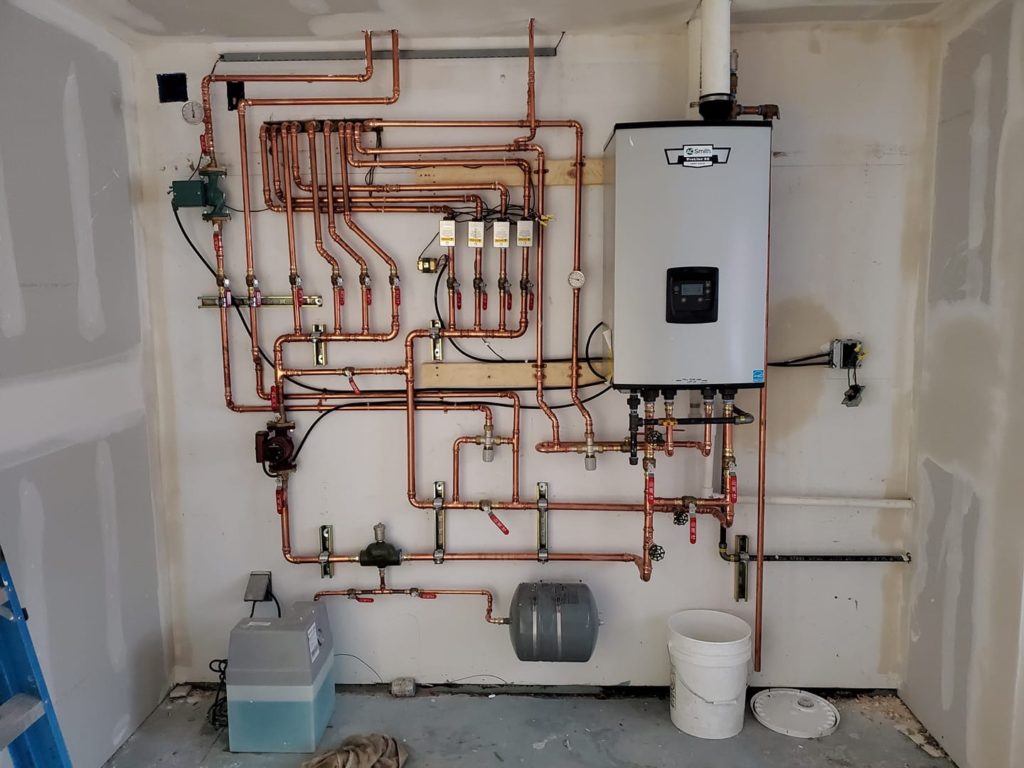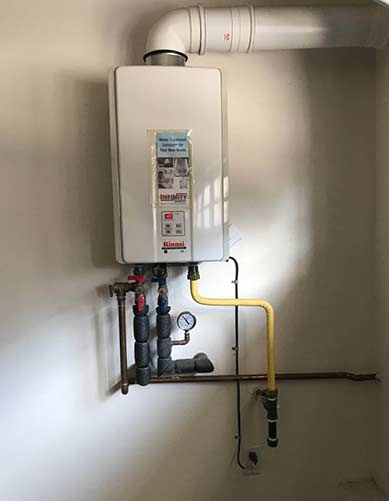Water Heater Installation for Improved Hot Water Efficiency and Performance
Full Overview to Water Heating UnitInstallation and Substitute
Comprehending the ins and outs of water heating system setup and substitute is critical for property owners seeking to guarantee effectiveness and dependability in their hot water supply. From selecting the proper kind and dimension to executing a smooth setup process, a number of variables have to be taken into consideration to avoid usual risks.
Kinds Of Water Heating Units
When thinking about water heating unit installment and replacement, it is vital to recognize the various kinds of hot water heater readily available out there. One of the most common kinds include storage tank hot water heater, tankless water heating systems, heatpump hot water heater, and solar water heaters.
Container water heaters are conventional systems that save a specific volume of warm water, making them conveniently available when needed. They are typically cheaper upfront however may sustain higher power costs with time as a result of warmth loss. On the other hand, tankless water heating systems supply warm water on need, getting rid of the requirement for storage. They are energy reliable and can save room, however their first costs are normally greater.
Warmth pump water heating units make use of electrical energy to transfer warm from the air or ground to warmth water, supplying substantial energy financial savings however calling for more room and details installation problems. Solar water heating systems harness solar energy to warm water, supplying an environmentally friendly alternative with prospective long-term cost savings, although they commonly need a back-up system for cloudy days.
Understanding these options makes certain educated choices regarding setup and replacement, satisfying particular requirements and preferences.
Selecting the Right Size
Picking the suitable size for a hot water heater is crucial to guarantee optimum performance and effectiveness. A system that is too small will certainly struggle to satisfy home demands, leading to irregular hot water accessibility and enhanced power consumption. Conversely, an oversized water heating unit can cause unnecessary energy waste and greater energy bills.
To determine the appropriate dimension, consider the family's peak warm water usage. This can be calculated based upon the variety of occupants and their common warm water requirements. As an example, a family of 4 might need a hot water heater with a capability of 50 to 80 gallons, relying on the use patterns, such as simultaneous showers and laundry.
Furthermore, examine the healing rate, which measures exactly how quickly a heating system can replenish warm water after it has been made use of. For tankless models, focus on the flow rate, measured in gallons per minute (GPM), to guarantee it meets the home's synchronised need.

Installment Process Overview

Following, the old system should be detached and eliminated, making sure to adhere to local codes and laws relating to disposal. Once the old unit is out, the new hot water heater can be positioned in location. This action entails linking the water supply lines, ensuring that all installations are leak-free and safe.
After establishing water links, it's vital to link the power supply, whether electric or gas, complying with the manufacturer's guidelines meticulously. As soon as all connections are made, the system should be full of water, and the power can be turned back on. It's vital to check for leakages and guarantee the water heating system is working correctly prior to completing the setup procedure.
Typical Installment Mistakes

One more frequent mistake is overlooking to comply with local codes and policies. Falling short to adhere to these requirements can not only cause safety and security dangers but might additionally result in costly fines or the requirement for expensive reinstallation. In addition, improper venting is a critical issue. Insufficient air flow can cause harmful gas accumulation, positioning major health and wellness threats.
Stopping working to secure connections or utilizing the wrong kind of installations can lead to leakages and water damage. By preventing these typical installation view publisher site blunders, homeowners can guarantee their water heating unit runs safely and successfully, taking full advantage of discover this info here performance and longevity.
Maintenance Tips for Longevity
Correct maintenance of a hot water heater is essential for its durability and ideal performance. Routine evaluations and maintenance can prevent expensive repair work and expand the appliance's life-span. Begin by checking the temperature setup; it ought to typically be established between 120 ° F and 140 ° F for ideal power efficiency and safety and security.
Every six months, purge the tank to eliminate debris buildup, which can impair heating effectiveness and cause deterioration. To do this, turn off the heater, link a pipe to the drainpipe valve, and let the water run till it is clear.
When they are rusted,Anode rods must be checked annually and changed. These poles help stop storage tank rust by attracting destructive elements in the water.
Furthermore, check the pressure safety valve regularly to guarantee it is functioning appropriately. This shutoff is crucial for stopping extreme pressure build-up within the storage tank.
Lastly, take into consideration arranging a professional upkeep check every few years for detailed examinations and maintenance. By sticking to these maintenance pointers, home owners can considerably enhance the efficiency, safety, and life-span of their hot water heater, ensuring reputable hot water for many years ahead.
Conclusion
In conclusion, appropriate setup and upkeep of water heating systems are critical for making sure efficiency and longevity. By understanding these essential facets, home owners can attain a dependable hot water supply while decreasing potential concerns related to water heater operation.
Comprehending the details of water heater installation and replacement is critical for property owners looking for to make certain efficiency and integrity in their hot water supply.Tank water heaters are standard systems that keep a particular quantity of hot water, making them easily offered when required. In contrast, tankless water heating systems supply hot web link water on need, getting rid of the demand for storage. Selecting a water heating system that is either also little or as well large can lead to inadequacies, resulting in insufficient hot water supply or extreme power consumption.
By understanding these vital facets, house owners can accomplish a trusted hot water supply while minimizing prospective concerns associated to water heating unit operation. drain cleaning.